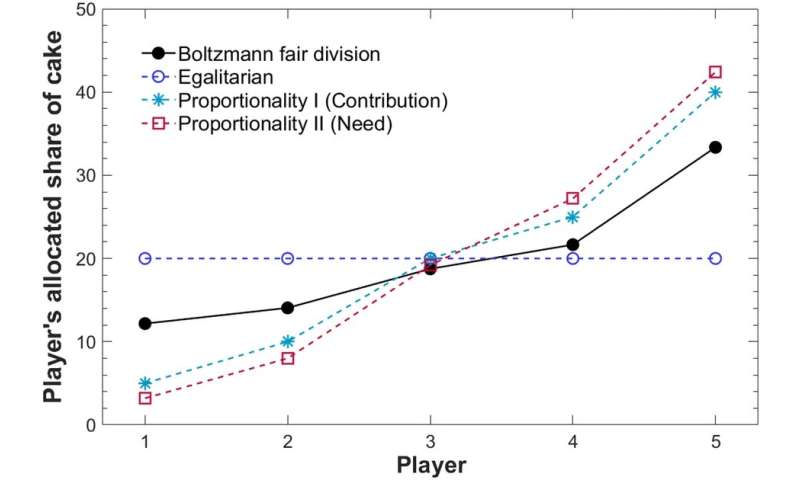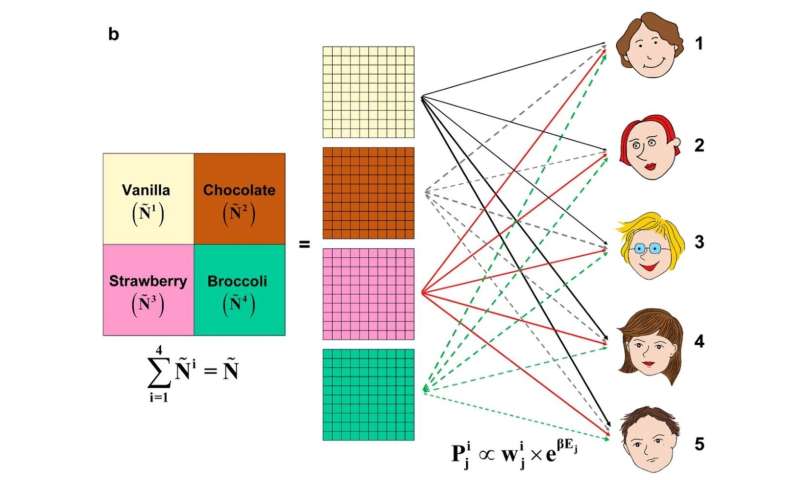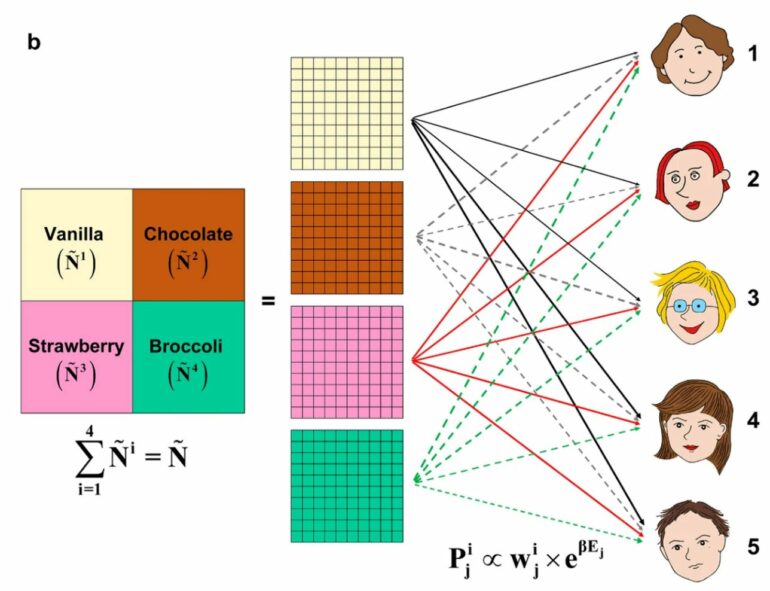A research team, affiliated with UNIST has proposed a fair division method from a completely different perspective, using the Boltzmann division. The research team anticipates that their model could serve as a feasible fair division for complex real-world problems, leading our societies one step closer to distributive justice.
This breakthrough has been led by Professors Chae Un Kim, Jaeup U. Kim, and Cheol-Min Ghim in the Department of Physics at UNIST, in collaboration with Ji-Won Park from the University of Ulsan.
In this study, the research team developed the mathematical model of the Boltzmann division for both homogeneous and heterogeneous cake-cutting problems, where players’ contributions, needs, and preferences for heterogeneous portions could be successfully integrated. The Boltzmann division was then optimized by maximizing the players’ total utility. Through the analysis of empirical data, the research team found that the Boltzmann fair division is a well-balanced division method and has superior aspects beyond the conventional division methods.
According to the research team, the Boltzmann fair division is a division method favorable to the socially disadvantaged or underprivileged, and it is drastically simple, yet highly versatile, and can be easily fine-tuned to directly apply to a variety of social, economic, and political division problems.

Allocated share of cake under homogeneous cake-cutting. The results using the Boltzmann division are compared with three conventional division criteria, Egalitarian (uniform cake division), Proportionality I (contribution), and Proportionality II (need). Note that the Boltzmann fair division shows a well-balanced division between Egalitarian and Proportionality I and II. © Scientific Reports (2022). DOI: 10.1038/s41598-022-19792-3

Boltzmann division for homogeneous and heterogeneous cake-cutting problems. (b) If applying the Boltzmann fair distribution principle, it is also possible to understand participants’ preferences when serving a cake with different flavors. © Ulsan National Institute of Science and Technology
“The Boltzmann fair division is simple but highly versatile and can be easily fine-tuned to apply to a variety of division problems,” noted the research team. “Thus, we believe that our work makes a seminal contribution to the feasible fair division for complex, real-world problems.”
Their findings have been published in the September 2022 issue of Scientific Reports.
More information:
Ji-Won Park et al, The Boltzmann fair division for distributive justice, Scientific Reports (2022). DOI: 10.1038/s41598-022-19792-3
Provided by
Ulsan National Institute of Science and Technology
Citation:
New study unveils Boltzmann fair division for distributive justice (2023, January 12)
